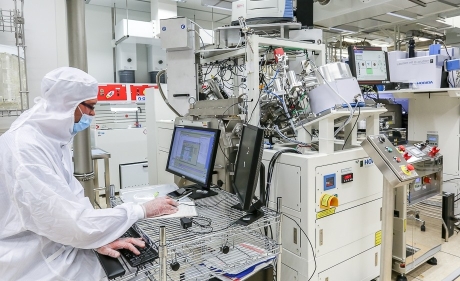About Université Grenoble Alpes
The University of Grenoble Alps (UGA) is a multidisciplinary institution located in the heart of the French Alps. UGA is renowned for its scientific and technological research activities, aimed at providing essential training to students and faculty and at addressing societal issues.
Rooted in its territory, multidisciplinary and open to the world, UGA brings together all the strengths of public higher education in Grenoble and Valence. The institution counts 59,000 students, 10,400 staff, including 6000 teachers, lecturers and researchers.
The Laboratoire des Technologies de la Microélectronique (LTM) and the Institute for Planetary sciences and Astrophysics of Grenoble (IPAG) are two labs from UGA, associated with the French national agency for research – CNRS.
The LTM is a mixed research unit strongly specialized in the field of micro and nanotechnologies applied to microelectronic. Located on the CEA-Grenoble site within the CEA-Léti area, the positioning of the LTM, as academic laboratory, within a research and development center using state-of- the-art 300 mm CMOS technological tools is unique internationally. This allows LTM to collaborate with major players in the field of microelectronics.
The IPAG research themes embrace all the aspects of the formation of solar systems, the study of exoplanets and disks, but also the accretion-ejection processes around young stellar objects and compact objects (neutron stars, black holes). In planetary sciences, IPAG studies Sun-Earth interactions, planetary subsurfaces, small bodies in the solar system, and the chemical evolution of primitive matter. The IPAG’s activities obviously include astronomical observations, but also laboratory measurements, high performance computing, as well as the design and operation of cutting-edge instrumentation for space missions and ground-based telescopes. IPAG’s expertise includes adaptive optics, integrated optics, interferometry, infrared detection, and radars on space probes to study the structure of Solar System bodies.
IPAG is the cradle of the NanoCarb instrument, invented jointly with ONERA as part of research and development works concerning miniature technologies for spectral imaging applied to Earth Observation, supported by important efforts from LTM to adapt technologies from micro-electronics to manufacture specific integrated miniature optical key components of NanoCarb.
UGA and SCARBOn
Regarding UGA's role in the SCARBOn project, it contributes significantly through its specialized departments, particularly the Institut of Planetology and Astrophysics of Grenoble (IPAG) and the Laboratoire des Technologies de la Microélectronique (LTM). UGA’s involvement centers on advancing the technological components of the project. It plays an integral role in the design, development, manufacturability and optimization of the NanoCarb-P (prototype) instrument, a compact imaging spectrometer for greenhouse gas (GHG) monitoring. This includes upgrading the interferometric plate and spectral filters, manufacturing key components, and conducting optical tests. UGA also contributes in the execution of flight measurement campaigns to acquire realistic GHG plume data, crucial for validating the instrument’s performance and supporting the SCARBOn project's overall mission to enhance space-based GHG monitoring capabilities.

